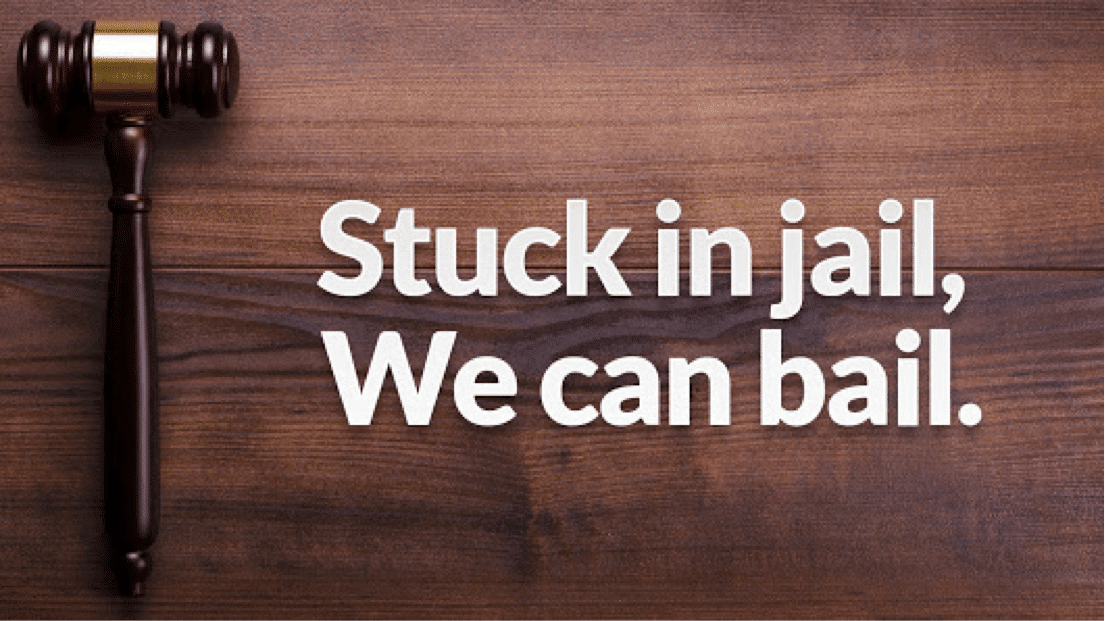Stark County Bail Bonds: Rapid and Reliable Bail Solutions
Stark County Bail Bonds: Rapid and Reliable Bail Solutions
Blog Article
Understanding Exactly How a Bail Bond Functions and Its Effect On the Legal Refine
The concept of a bail bond works as an important system within the legal process, enabling offenders a path to secure their launch while waiting for trial. By understanding the complexities of this procedure, including the roles of bail bondsmen and the financial ramifications, one can value just how access to bail substantially influences legal results. Differences in bail price raise pressing questions regarding systemic inequalities and their wider societal effect. What effects develop when the capability to pay establishes one's flexibility? Checking out these measurements reveals a complex interplay deserving of further assessment.
What Is a Bail Bond?
A bail bond is a legally binding contract that works as a financial assurance for the launch of an implicated person from prison while they wait for test. This mechanism allows defendants to safeguard their short-term flexibility by giving a monetary assurance to the court that they will certainly stand for all arranged hearings - bail bond company canton ohio. The bond quantity is typically set by a court based on aspects such as the seriousness of the crime, the defendant's criminal background, and the risk of trip
bail bonds can be uploaded by the offender or with a bondsman, that bills a non-refundable cost, normally a percent of the total bail quantity, for presuming the economic threat. If the offender fails to appear in court, the bail bond becomes forfeited, and the court might release a warrant for the individual's arrest. In such situations, the bail bondsman is commonly tasked with finding and capturing the offender to alleviate their financial loss.
Basically, bail bonds offer an important function in the judicial system by balancing the presumption of innocence with the demand to make sure court appearances, therefore promoting the accused's right to plan for their situation beyond imprisonment.

The bail Refine Discussed
Navigating the bail process can usually really feel overwhelming for those unfamiliar with the lawful system. The bail process typically begins after a person is apprehended and scheduled. At this factor, a judge will determine the bail amount, which is planned to make sure the accused's appearance at future court days. Elements influencing this choice include the nature of the alleged criminal offense, the accused's criminal background, and their ties to the area.
Once the bail quantity is established, the offender or their agent can pick to pay the sum total in cash, prepare for a bail bond, or request a Bail hearing for a prospective decrease. If a bail bond is chosen, a licensed bail bondsman generally bills a non-refundable fee, generally around 10% of the overall bail quantity, for guaranteeing the court that the offender will show up for all called for process.
Upon settlement, the bondsman will upload the bail with the court, safeguarding the offender's launch. It is necessary for the offender to comply with all court days; falling short to do so can cause the forfeiture of the bail and added legal consequences.
Types of bail Bonds
bail bonds come in numerous kinds, each developed to meet different needs and conditions within the legal structure. One of the most typical kind is the guaranty bond, where a bondsman offers the full bail quantity for a cost, generally 10-15% of the complete bail. read here This arrangement enables accuseds to secure their release without needing to pay the entire bail upfront.
One more kind is the money bond, which requires the defendant or a 3rd party to pay the complete bail quantity in cash. This choice is usually preferred for its simpleness, as the cash money is returned upon the offender's court appearance, minus any type of administrative charges.
Property bonds involve using realty as collateral for bail. The home has to be valued at or above the bail amount, and if the offender fails to show up in court, the court may take the home.
Lastly, there are federal bonds, made especially for federal situations, which often lug various terms and problems. Recognizing these different kinds of bail bonds is crucial for offenders and their households as they navigate the complexities of the legal system. Each kind offers an unique purpose, making sure a series of choices for securing launch from guardianship.

Duty of bail Bonds in Lawful End Results
Usually ignored, the duty of bail bonds visit the website considerably affects lawful outcomes for accuseds. bail works as a device to make certain that individuals waiting for trial can remain without imprisonment, thus allowing them to take part better in their defense. The schedule of bail bonds makes it possible for offenders that might not have the economic ways to post bail directly to secure their launch, which can lead to more favorable lawful end results.
When offenders are out on bail, they have the possibility to gather evidence, speak with legal counsel, and prepare their instance without the stress of prison arrest. This enhanced accessibility to resources and assistance can cause improved opportunities of discussing plea deals or obtaining a much more lax sentence. The ability to preserve work and household links while waiting for test can add to an extra favorable understanding in court.

Implications for Defendants and Culture
The implications of the bail bond system extend past private offenders, impacting culture in its entirety. For several defendants, specifically those from reduced socioeconomic backgrounds, the inability to manage bail can lead to extended pretrial apprehension. This situation typically causes task loss, disrupted household characteristics, and increased likelihood of begging guilty to lesser charges to secure launch, despite actual shame.
In addition, the societal repercussions are substantial (stark county bail bonds). A high dependence on bail bonds can continue inequalities in the justice system, as wealthier individuals can protect their liberty more quickly while poorer offenders stay incarcerated. This difference elevates honest problems about the fairness of the legal process and the wider ramifications for public rely on the justice system
In addition, pretrial detention can intensify criminal behavior, adding to greater recidivism prices and raised check that strain on area resources. The bail bond system, therefore, not only affects the instant situations of defendants however likewise has far-reaching results on social stability and public safety and security. Addressing these implications is crucial for developing a more equitable legal framework that safeguards both private civil liberties and the broader passions of culture.
Verdict
To conclude, comprehending the technicians of bail bonds is important for browsing the legal system efficiently. The ability to safeguard short-term release from incarceration with the payment of a bond dramatically influences lawful end results for defendants, allowing for better prep work of their protection. Additionally, the ramifications of bail bonds extend beyond specific cases, revealing systemic inequalities that affect neighborhoods and contribute to broader societal issues, such as recidivism and economic instability.
The concept of a bail bond offers as a crucial mechanism within the legal procedure, enabling accuseds a path to protect their launch while waiting for test. By understanding the ins and outs of this process, consisting of the roles of bail bondsmen and the monetary effects, one can value how access to bail dramatically influences legal end results.bail bonds can be posted by the defendant or via a Bail bondsman, who bills a non-refundable fee, normally a portion of the complete bail quantity, in exchange for assuming the financial risk. The most typical type is the surety bond, where a Bail bondsman offers the full bail quantity for a cost, usually 10-15% of the complete bail. The availability of bail bonds allows accuseds who might not have the economic methods to publish bail directly to safeguard their launch, which can lead to a lot more favorable legal results.
Report this page